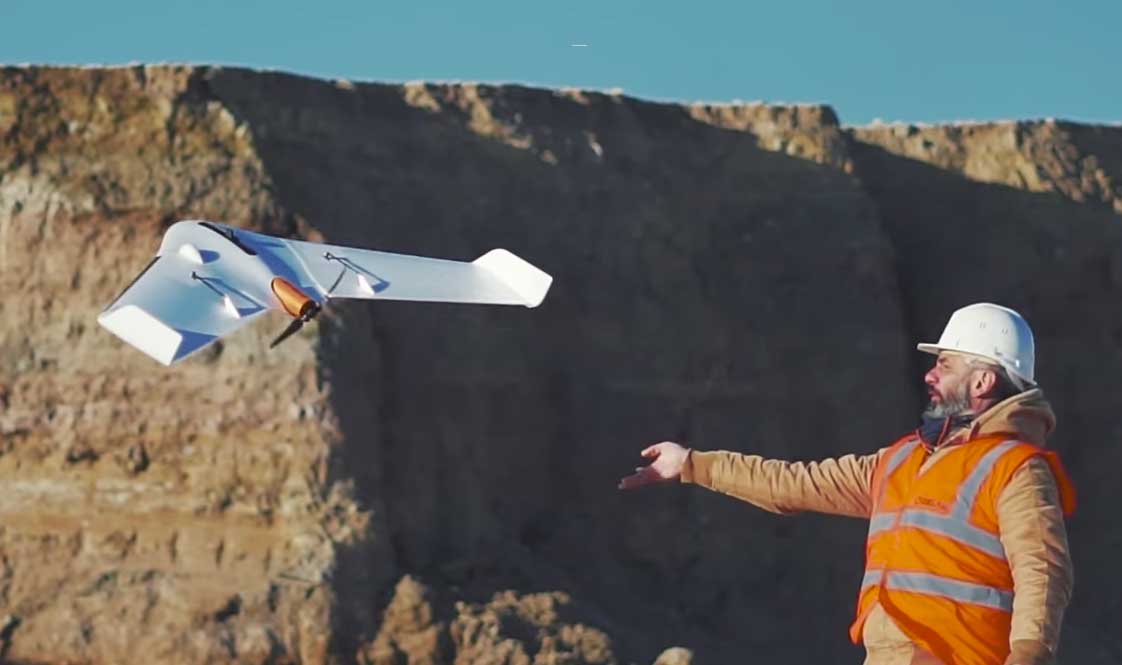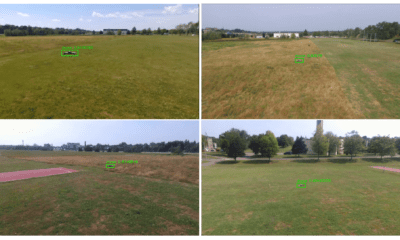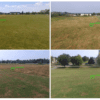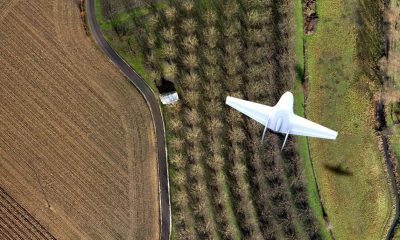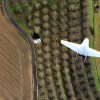Delair’s UX11 Fixed-Wing Drone Makes Precise Aerial AI Globally Available
France-based Delair has introduced its bird-like third generation drone UX11 to the world. The UX11, a lightweight coup d’état of aerial drone technology brought to life by artificial intelligence, has a fascinating method of takeoff that diverts from the usual STOL (Short Take-Off and Landing) capabilities of most fixed-wing drones.
Researchers from the ISAE-SupAero (National Higher French Institute of Aeronautics and Space) designed and developed this gifted little drone for Delair, using instead a BTOL or “Birdlike TakeOff and Landing” method. According to Delair, the UX-11 is the first autonomous BTOL drone capable of landing at sharp angles of attack to achieve precision maneouvres.
The wings of the UX11 are an extension of the drone’s fuselage, with a camera integrated beneath. Also underneath the drone is a precision sensor that allows the drone to land like an airplane, pitching almost to stalling in order to brake before touching the ground.
Fully automatic and autonomous, the UX11 executes pre-programmed missions that can followed by the pilot on a tablet. After a completing a short five minute check-list, the lightweight drone is launched by hand, after a simple up-and-down arm movement executed by the operator.
The UX11 can cover up to 500 acres and is able to travel unassisted for one hour at a height of 120m. It has been designed for BVLOS (Beyond Visual Line of Sight) flights, and benefits from proprietary radio technology and 3G / 4G connectivity to provide communication between the drone and the ground control station.
BVLOS is one of Delair’s specialties. Since its creation in 2011, this Toulouse start-up turned SME has established itself as one of the world specialists in beyond line of sight operations, with its first two fixed-wing drones, the DT-18 and the DT-26. The UX11 is in line with these two models which were instrumental in guiding French regulations and inspire the European framework.
Speaking with French website Aerobuzz, president and co-founder of Delair Michael Lagarde described the complexity of the UX11’s technology, which has a score of high-tech solutions crammed into one very small device. They range from aerodynamics to communication with the ground, energy, imaging and electromagnetic compatibility.
Lagarde goes on, explaining that the challenges the development team overcame in getting this combination of technology to work together were considerable. “All systems tend to get scrambled. In terms of energy on board, the constraints are extreme.”
To simplify the process, Delair chose a flying wing. “It’s not the most powerful formula, but it’s the strongest and easiest to produce,” says Lagarde. It was developed in a digital wind tunnel thanks to the experience gained with the DT18. “The tests we did in Supaero’s S4 wind tunnel allowed us to calibrate our digital model and extrapolate it to the UX11. We did a lot of flight tests,” he continued.
With in-built AI algorithms, the UX11 is able to carry out in-flight calculations. Through a partnership set up with Intel, Delair relies on deep learning algorithms that they have integrated into their drones. “Today, the solutions are mature. We want to standardize them for large scale deployment.”

Source: Delair/Youtube
Delair, which is located in Labège, near ISAE-Supaero, relies on students and researchers at the school. “Even if the purpose of researchers is not the same as that of a company, we learned a lot from them. We have a common passion. There are regular round trips with PhDs. It does not necessarily lead, but the fact of being in contact with the academic environment keeps our engineers at the top level.”
From four passionate engineers in 2011, Delair has grown to 120 employees today. This year the workforce is expected to surge. Whereas since its creation, the company has produced 1,500 drones, in 2018 it plans to produce 1,000 on its two production sites in Toulouse and Ghent (Belgium). Until now Delair’s best seller was the DT18, but this is expected to be quickly replaced by the UX11 whose production cycle was reduced to just two days.
Now with the global launch of the UX11 in 70 countries around the world, Delair thinks they have an offering in the UX11 that industry will see is affordable and effective.
“Several factors are lining up to accelerate the use of commercial drones in all kinds of businesses, including the establishment of government regulations, technological improvements in UAVs, and economic pressures on companies to improve operational efficiencies. But the common challenge we see in the market is the need for an easy-to-use, cost-effective solution that produces actionable insights. Our latest model drone platform has been developed to address those requirements and break new ground in terms of what can be done with a drone, as well as who can operate it,” said Benjamin Benharrosh, co-founder and head of North American operations at Delair.
Optimized for mapping and digitalization of large surfaces and industrial infrastructures, Benharrosh says the UX11 raises the benchmark of long-range fixed-wing drones.
“The Delair UX11 sets a new standard of efficiency, cost and quality in a long-range UAV platform. The drone itself is truly state-of-the-art in its design and construction, and it enables industry-leading performance and flight range, as well as streamlined maintenance, advantages that all reduce costs. The integrated processing capabilities are able to ensure image quality in real time and provide users with accurate results that shape critical operational decisions and strategies. And it’s designed for flexible use in a variety of conditions and use models, further lowering TCO,” noted Benharrosh.

